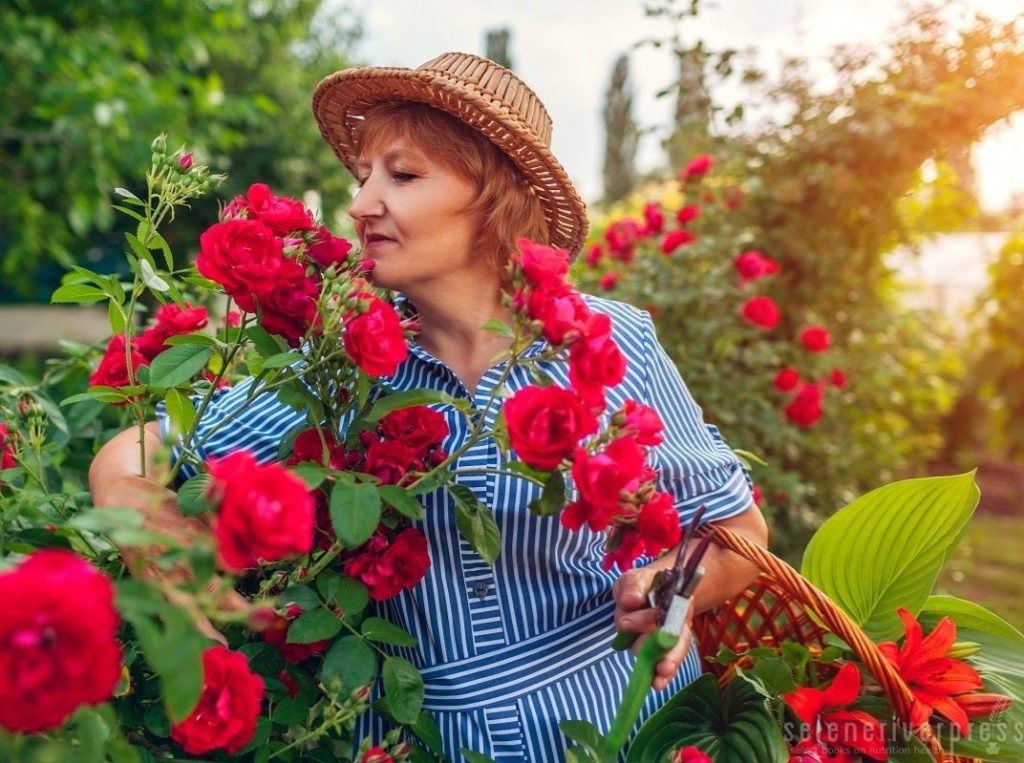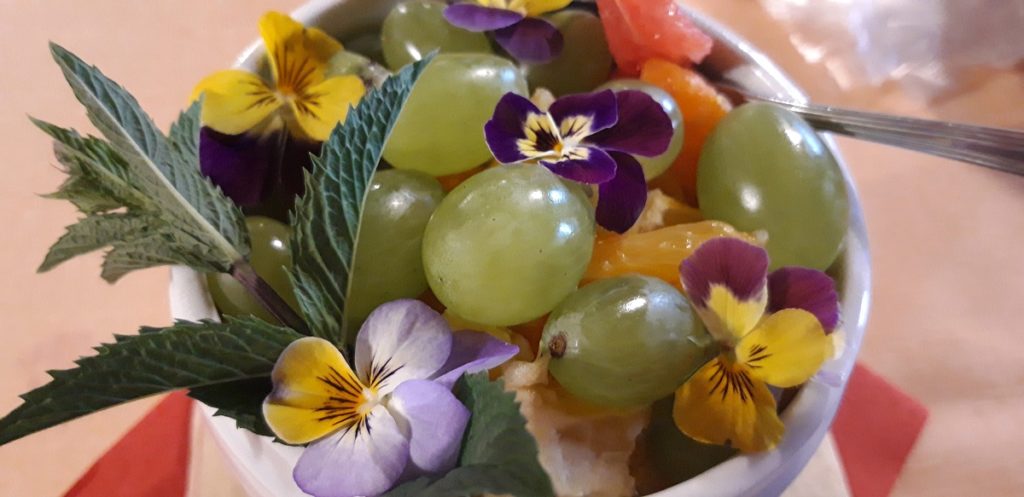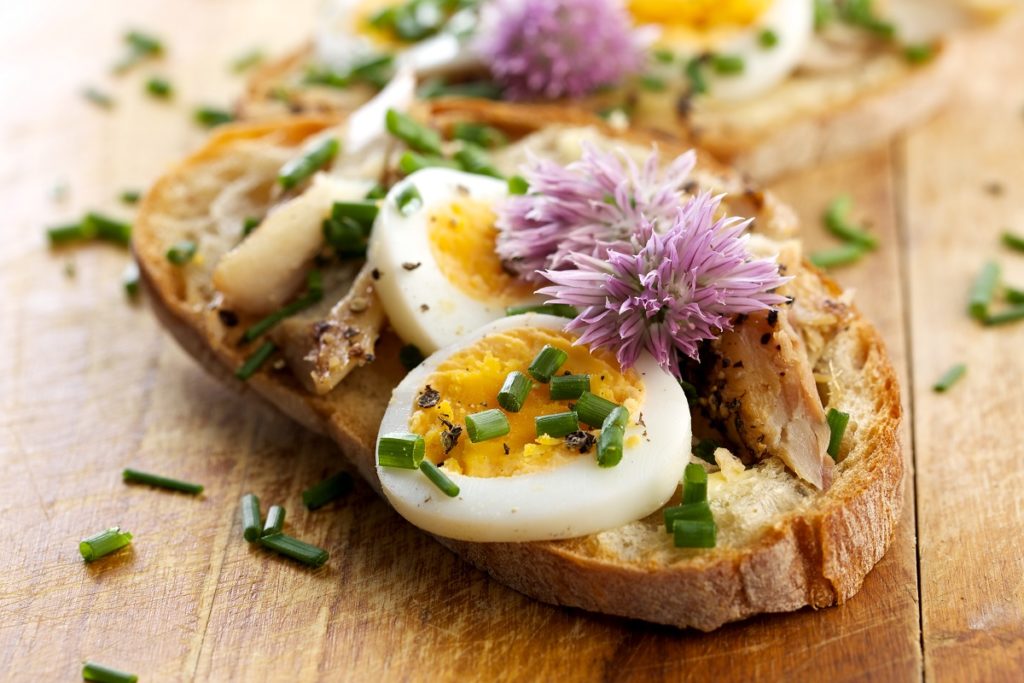I recently went looking for information on some of the lovely herbs and flowers growing in my yard, and to my pleasant surprise I discovered that many of them are, in fact, edible flowers! I knew a little about edible flowers before this, and I always picked the fresh petals on my one red rose bush to add to my salad or use for rose water. Nevertheless, I’d never been seriously interested in doing more research on them.
Now that my curiosity was piqued, I additionally wondered if edible flowers had any nutritional value. So, I decided to satisfy my curiosity by writing about them. Come join me as we travel the world of edible flowers and learn what makes them so popular.
I generally make bouquets with my herbs and flowers, but I’d never contemplated the idea of simply growing edible flowers for the express purpose of eating them. However, after some research it became obvious to me that my readers should know about these choice morsels and what a rich experience it is to grow them.
First Things First: Only Eat Safe Edible Flowers
According to this informative article on edible flowers, buying plants or seeds that are sold by the Latin name is a good way to know you are purchasing an edible species. The article also includes a nice list of exactly which edible flowers are safe to grow and eat. But while you are at it, you should also refer to this list of poisonous plants as well. (I recommend printing it up or saving it to your files. I’ve actually grown some plants on this list without knowing they were poisonous! This resource is a keeper, especially for the novice gardener.)
Nutritional Aspects of Edible Flowers
A great article on this subject is “Nutritional Value of Edible Flowers” by Sara Ipatenco. She begins (emphasis mine), “You’ve probably heard the sage advice to stop and smell the roses, but perhaps you should also stop and EAT the roses.” I so agree. (As I say above, I eat the petals from my old but trusted red rose bush that’s been growing in my yard for many years.)
Here are a few nutritional facts about some edible flowers collected in the article:
- Foxglove and crocus: Do not ingest as they are poisonous.
- Raw borage: Like most edible flowers, raw borage is a great natural source of vitamin C, delivering 31.2 mg in a single cup.
- Nasturtiums: Another flower source of vitamin C. According to the Vineyard Gazette, they contain ten times more vitamin C than lettuce. Nasturtiums also offer a small amount of vitamin D.

- Pumpkin flowers: In addition to a small amount of vitamin D, a cup of pumpkin flowers provides 643 international units of vitamin A, an important nutrient for healthy eyes.
- Rose petals: These provide a small amount of vitamin E.
- Lavender: According to The Mindful Word magazine, lavender is another good source of vitamin A.
Adding to their vitamin content, edible flowers are also a source of essential minerals. As noted in the article:
- Chrysanthemum, dianthus, and viola: According to the journal Molecules, these all contain a good dose of potassium, like many other edible flowers.
- Borage: A cup of borage provides 3 mg of iron and a small amount of calcium.
- Pumpkin and sesbania flowers: Both of these offer a small amount of iron.
- Lavender: Another edible flower containing small amounts of bone-building calcium.
Yes, there are many nutritional components in edible flowers, but they can also grace a salad dish with vivid colors, making a super special treat for you family or friends on that next luncheon you serve on the patio.
Six Edible Flowers I Find Especially Intriguing
Following are some great ideas for serving edible flowers in food, plus even more information on six amazing edible flowers. (Of course, I need to caution you to grow your own edible flowers or make sure they were not treated with pesticides if you choose to purchase them.)
According to the article “6 Edible Flowers with Amazing Nutritional Value” from the website D Herbs, there are all kinds of ways to use edible flowers, from tossing them in green salads to layering them into a sandwich. You can preserve the petals in oils and vinegar, or paint them with an egg-white wash and sprinkle them with sugar. (You will need to store these in an air-tight container.) Here is some nutritional information on the six flowers listed in the article:
Nasturtium: “This is a highly used flower in the culinary world because of the beautiful blossoms and unique peppery flavor profile. The leaves of the nasturtium flower are rich in vitamin C and contain a sulfur compound, which has historically been used for its antibacterial properties.”
Honeysuckle: “There are over 200 varieties of honeysuckle in existence, but the most common ones are woodbine and Japanese honeysuckle. The fragrant blossoms have been applied to the skin in Traditional Chinese Medicine to help remedy inflammatory skin conditions.”
Pansy: “Pansies are as pleasant to eat as they are to look at. The blue, purple, and yellow blossoms are quite dazzling and offer a floral flavor that can be refreshing. These blossoms are commonly added to desserts to enhance the presentation…While they are visually stunning, most people fail to recognize the powerful…anti-inflammatory properties.”
Borage: “You may be shocked to discover that the vibrant blue borage blossom tastes similar to a cucumber. These flowers can be wonderful additions to salads, dips, sorbets, or tangy lemonades. Historically, people have used borage blossoms to help remedy sore throats or minor coughs.”
Hibiscus: “Many people are familiar with hibiscus tea, which is a known vasodilator that has demonstrated anti-hypertensive effects. Several studies have shown that hibiscus tea helps to relax aortic rings by inhibiting calcium influx into vascular smooth muscle cells. This means that it has potential blood pressure lowering properties.”
Calendula: “This beautiful orange or yellow flower has a long history of being made into topical oils and salves to help remedy wounds and burns. One study, which involved cancer patients undergoing radiation therapy, found that calendula ointment demonstrated superior properties to prescription products for reducing radiation burns.”
Cultures That Use Edible Flowers
Now let’s learn about how various cultures around the world have used edible flowers. For example, this article from the website Eat the Planet discusses the cultural significance of hibiscus:
Medicinal uses: “Indian Ayurveda and Chinese traditional medicines have frequently used hibiscus within remedies. Records show that hibiscus tea could have been used by ancient Egyptians to reduce body temperature and treat certain diseases. Within some African cultures, hibiscus tea was thought to cure constipation, liver disease and the common cold. A poultice was also made with the leaves and applied directly to wounds and inflamed skin. Notably, many individuals from Iran still use hibiscus tea to lower blood pressure, which recent studies have begun to find supporting evidence for.”
Did you know: “Hibiscus flowers are a widely used symbol of cultural significance. Within India the hibiscus flower is used as an offering to worship the Hindu Goddess Kali. This ritual is called ‘Puja,’ and flowers are a very popular offering. The plant is the national symbol of many tropical islands including Haiti, Niue and the Solomon Islands.”
Grow Edible Flowers and Herbs and Preserve Your Plant Treasures
The website Urban Farmer’s Guide has a plethora of ideas for growing both herbs and edible flowers in the same pot, which is great if all you have is a veranda or some smaller yard where you can tinker with this lovely hobby. Drying flower petals was a favorite hobby of one of my dear aunts. If you would like to try it out, look at these six easy methods for drying flower petals: 1) book drying; 2) dehydrating; 3) oven drying; 4) microwave drying; 5) air drying; and 6) freeze drying.
Well, have I encouraged you to start growing and eating edible plants? I sure hope I so. Try them in your next salad (but remember that your dressing is just as important). Your guests will love it, and you’ll be happy to know they’re eating a ton of floral nutrition with each and every bite!
[xyz-ihs snippet=”Begin-Authors-Note”]Afterthoughts from the Traditional Cook
“What Claire could do with the edible flowers that grew around the cranky apple tree in the backyard was the stuff of legend. Everyone knew that if you got Claire to cater your anniversary party, she would make aioli sauce with nasturtiums and tulip cups filled with orange salad, and everyone would leave the party feeling both jealous and aroused. And if you got her to cater your child’s birthday party, she would serve tiny strawberry cupcakes and candied violets and the children would all be well behaved and would take long afternoon naps. Claire had a true magic to her cooking when she used her flowers.”
—Sarah Addison Allen, First Frost. (You can find more quotes on the wonders of edible flowers here.)
Disclaimer from Maria Atwood, CNHP: I am a Certified Natural Health Professional (CNHP) not a medical doctor. I do not diagnose, prescribe for, treat, or claim to prevent, mitigate, or cure any human diseases. Please see your medical doctor or health practitioner prior to following any recommendations I make in my blog posts or on my website.
Images from iStock/Maryviolet (main), Malaui (fruit cup), zi3000 (bread with egg).





